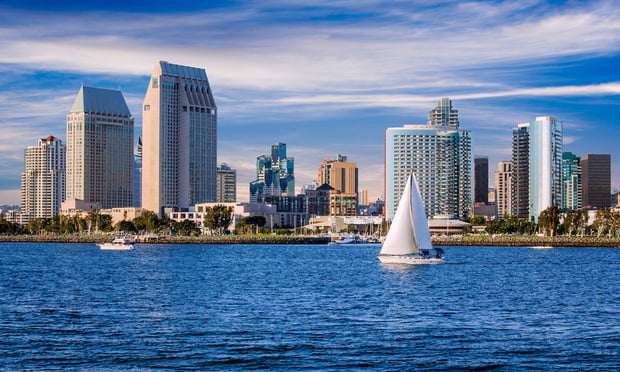 The life science market in San Diego is among the top in the country. According to a report from Cushman & Wakefield, San Diego is the third largest Biotech Hub in the country, behind Cambridge and San Francisco. The market has more than 19 million square feet of biotech space, and the number is growing. In the last several quarters, demand has increased by nearly 2 million square feet, and in the second quarter of 2018 alone, tenants absorbed 212,000 square feet of biotech space. The market has always had a biotech presence, but the sector has grown rapidly this cycle.
The life science market in San Diego is among the top in the country. According to a report from Cushman & Wakefield, San Diego is the third largest Biotech Hub in the country, behind Cambridge and San Francisco. The market has more than 19 million square feet of biotech space, and the number is growing. In the last several quarters, demand has increased by nearly 2 million square feet, and in the second quarter of 2018 alone, tenants absorbed 212,000 square feet of biotech space. The market has always had a biotech presence, but the sector has grown rapidly this cycle.
“San Diego's life sciences sector has been on a gradual expansion over the last 10 years, since the 2008 recession,” Greg Bisconti, executive director and national practice group leader of life sciences advisory group at Cushman & Wakefield, tells GlobeSt.com. “Over the last year, funding level in life sciences has grown slowly, but the number of financings has decreased. Essentially, we're seeing more money go into fewer companies, and the typical Series A is approaching $20-30 million versus the $5-10 million that we saw just a few years ago. Additionally, M&A and IPO activity has also hit new highs. While it feels a bit frothy, there is still a lot of money chasing deals and the amount of VC funding being raised is still on the rise. San Diego is known as the Genomics capital of the world. Overall a large part of the growth of the sector has to do with companies like Illumina making San Diego their headquarters.”
The metrics are all improving. Vacancy rates are sub 6% for biotech space, and asking rates are increasing, now at $2.50 to $4.50 triple net, per square foot. Despite the growing demand, it hasn't yet outpaced supply. “While demand hasn't really outstripped supply, there is definitely limited space available across every category,” Ted Jacobs, managing director of global life sciences practices group at Cushman & Wakefield, tells GlobeSt.com. “Most notably, the quality of the space is very mixed, and most demand by promising life sciences companies are focused on newer build-out space with on-site amenities. In short, most demand is focused on new, custom designed Class A space while older generation space is falling by the wayside, and as such most transactions take place in this new space or space that was improved in the last few years while older improvements tend to be picked over at discounted rates. In order to compete for talent with other life sciences companies we are seeing class-A space being leased while second generation space that is less attractive often collects dust.”
Recommended For You
Want to continue reading?
Become a Free ALM Digital Reader.
Once you are an ALM Digital Member, you’ll receive:
- Breaking commercial real estate news and analysis, on-site and via our newsletters and custom alerts
- Educational webcasts, white papers, and ebooks from industry thought leaders
- Critical coverage of the property casualty insurance and financial advisory markets on our other ALM sites, PropertyCasualty360 and ThinkAdvisor
Already have an account? Sign In Now
*May exclude premium content© 2025 ALM Global, LLC, All Rights Reserved. Request academic re-use from www.copyright.com. All other uses, submit a request to [email protected]. For more information visit Asset & Logo Licensing.








